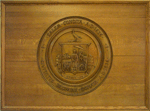Little, Philip: Difference between revisions
From Salem Links and Lore
mNo edit summary |
mNo edit summary |
||
| Line 1: | Line 1: | ||
Philip Little, a painter, who lived from 1857-1942, was a well know artist of Salem who was friends and a contemporary of [[Frank Benson]]. Little was both a civic leader and an artist. | Philip Little, a painter, who lived from 1857-1942, was a well know artist of Salem who was friends and a contemporary of [[Frank Benson]]. | ||
He drew on the New England scenery and coastal life for his subject matter, creating Impressionistic scenes of the coast, especially Maine. In city politics, he served on both the board of aldermen and the common council as well as the Health Board. | |||
Born in Swampscott, he moved to Salem in 1886. Little was both a civic leader and an artist. | |||
He drew on the New England scenery and coastal life for his subject matter, creating Impressionistic scenes of the coast, especially Maine. | |||
In city politics, he served on both the board of aldermen and the common council as well as the Health Board. | |||
He also served as a curator of art for Salem's Essex Institute. | He also served as a curator of art for Salem's Essex Institute. | ||
Little also painted camouflage of warships for the United States Navy. | |||
Revision as of 11:25, 29 April 2010
Philip Little, a painter, who lived from 1857-1942, was a well know artist of Salem who was friends and a contemporary of Frank Benson.
Born in Swampscott, he moved to Salem in 1886. Little was both a civic leader and an artist.
He drew on the New England scenery and coastal life for his subject matter, creating Impressionistic scenes of the coast, especially Maine.
In city politics, he served on both the board of aldermen and the common council as well as the Health Board.
He also served as a curator of art for Salem's Essex Institute. Little also painted camouflage of warships for the United States Navy.
See Also
- Philip Little Salem Tales, SalemWeb.com
- "Philip Little in retrospect: I am distinctly American" Salem Evening News, Jan. 3, 1977, p.13
- Philip Little,1857-1942: the first major exhibition of oils, watercolors, etchings and lithographs Arvest Galleries, 1976.
- National Cyclopedia of American Biography p. 315
- "Artist Little held big place in Salem's history during first half of 20th Century." Salem Evening News, March 14, 2005, p.B5
